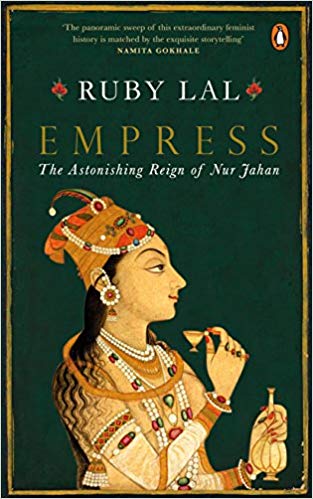Empress :The Astonishing Reign of Nur Jahan comes after a host of other works by Ruby Lal on themes such as domesticity, women’s writing, harem, imperial household and so on in pre-colonial South Asia. Her previous book, Domesticity and Power in the Early Mughal World (2005) opened up new vistas of looking at the Mughal harem, domestic space, and the feminine world, through the prism of power. Although it was not based on any particular persona, Nur Jahan was highlighted for her ‘centrality’ which became possible, ‘only in the track of the powerful women who had gone before her’ (Lal 2005, 224).
The Empress, as the title suggests, puts the spotlight on Nur Jahan as a political figure. The book delineates itself as creative non-fiction, and a biography at the outset, by attempting to also explore the oral narrative of ‘what exactly the public knows (or think it knows) about Empress Nur’ (p. 6). It is Nur Jahan not just as the Mughal empress who is invoked, but also a fascinating subject of South Asian cinema, theatre, comics, historical romances in multiple languages, and popular memory. However, the book does a lot more.
The book is divided into sixteen chapters—‘Queen of Queens, An Introduction’, ‘Miracle Girl, Al-Hind’, ‘The Cupolas of Chastity and the Perfect Man’, ‘The Wak-Wak Tree’, ‘The Mirror of Happiness’, ‘Grave Matters’, ‘A Key for Closed Doors’, ‘Ascent’, ‘Wonder of the Age’, ‘Veils of Light’, ‘The Light-scattering Garden’, ‘Fitna’, ‘The Rescue’, ‘Angel of Death’, and ‘Beyond 1627, An Epilogue’. It follows a chronological narration along with many interesting deviations, trying to connect the dots of historical conjunctures of Nur Jahan’s life. Lal also provides elaborate biographical details of prominent figures in the book, a few illustrations, notes on transliteration and terminology, and a detailed analysis of the sources.

